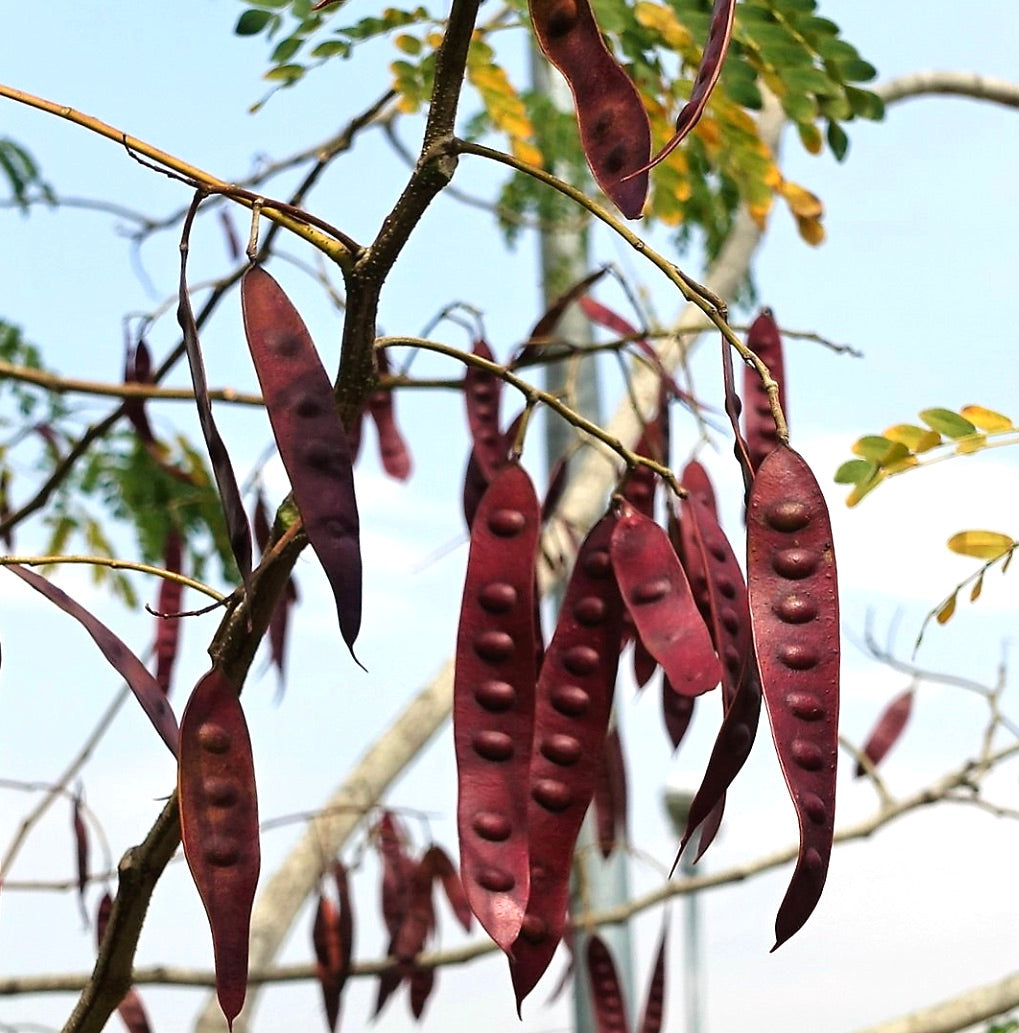Albizia niopoides SEEDS
Albizia niopoides SEEDS
Couldn't load pickup availability
Product Description
Albizia niopoides, also known as the White Siris or Cupiana, is a species of flowering tree native to tropical and subtropical regions of Central and South America. It is a member of the legume family, Fabaceae. Here are some key characteristics and information about Albizia niopoides:
-
Appearance: Albizia niopoides is a medium-sized tree that can reach heights of up to 15 meters (approximately 50 feet) or more. It has a rounded crown and a spreading canopy. The bark is grayish to brown, and the leaves are pinnately compound, with small leaflets arranged in pairs along the leaf stalk.
-
Foliage: The foliage of Albizia niopoides consists of feathery, fern-like leaves that are bright green and composed of numerous small leaflets. The leaflets are typically arranged in pairs along the leaf stalk (bipinnate).
-
Flowers: The tree produces small, fragrant, and attractive white or cream-colored flowers that are arranged in spherical clusters called inflorescences. These inflorescences can be quite showy when in bloom.
-
Fruit: After flowering, Albizia niopoides produces flattened pods that contain seeds. The pods are usually brown and can be quite long, reaching up to 30 centimeters (about 12 inches) in length.
-
Habitat: This species is native to a wide range of habitats, including tropical and subtropical forests, savannas, and riparian areas, throughout Central and South America. It is commonly found in countries such as Brazil, Peru, Colombia, and Venezuela.
-
Cultural and Ecological Significance: Albizia niopoides is valued for its timber, which is used in various applications, including construction and furniture making. The tree also provides shade and serves as a source of nectar for pollinators and wildlife. Its presence can contribute to the overall biodiversity of its native ecosystems.
-
Invasiveness: In some regions outside of its native range, Albizia niopoides has been reported as invasive, particularly in Hawaii. Invasive plants can displace native species and disrupt local ecosystems, so it is essential to manage their spread in non-native areas.
-
Cultivation: Albizia niopoides can be grown as an ornamental tree in tropical and subtropical regions with a frost-free climate. It prefers well-drained soil and regular watering. When cultivated, it can be pruned to maintain a desired shape and size.
It's important to note that Albizia niopoides should be planted responsibly, especially in regions where it is not native, to prevent its potential invasive spread. In its native range, it plays a valuable ecological role and is used for various purposes by local communities.
Botanical family: Fabaceae
Botanical genus: Albizia
Botanical species: Albizia niopoides
Date of Harvest:
Cultivation
Cultivation


